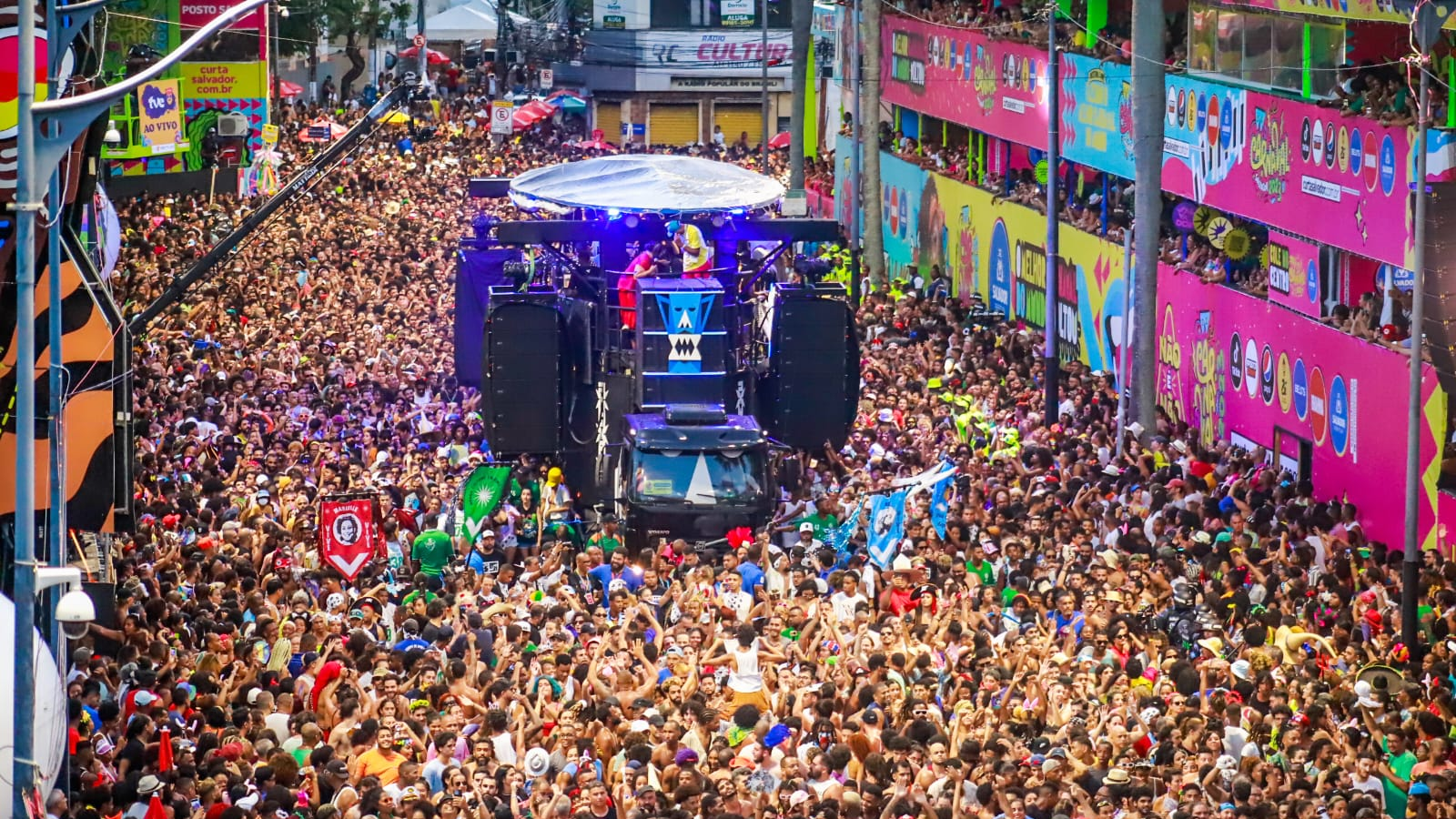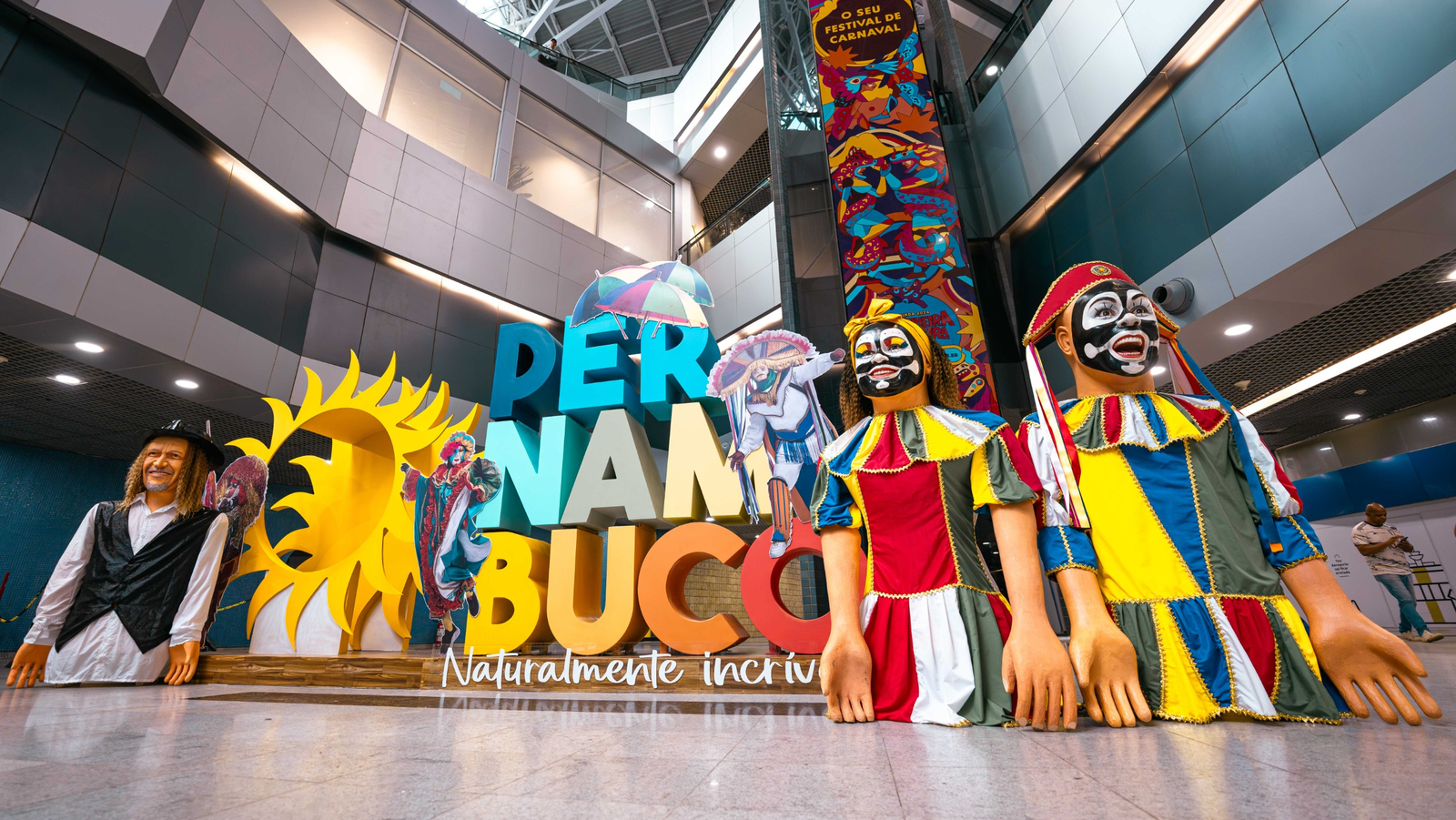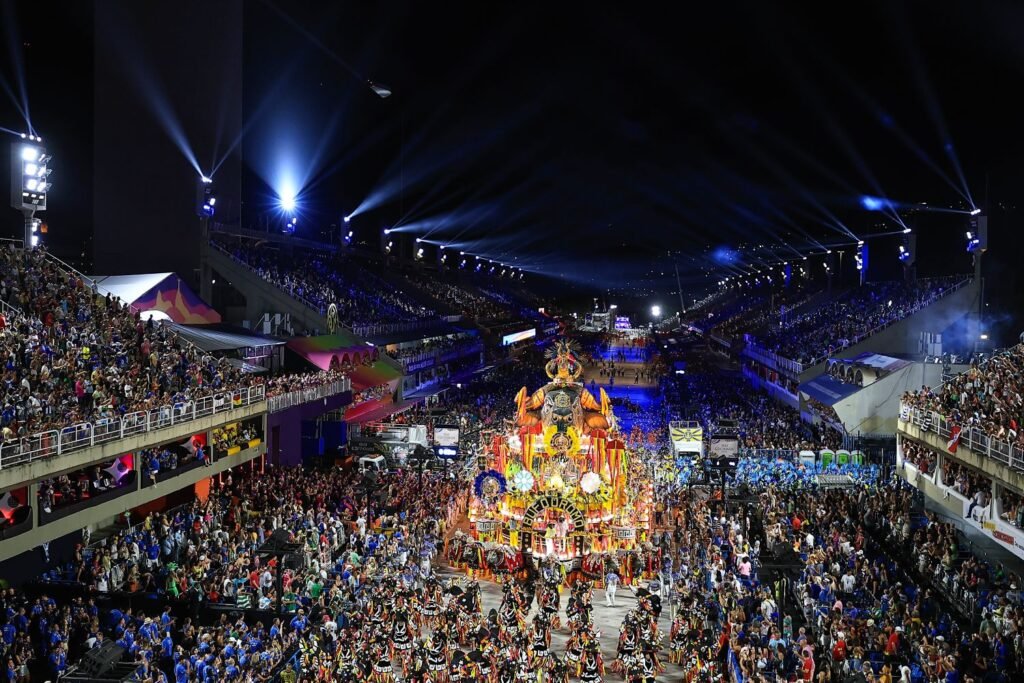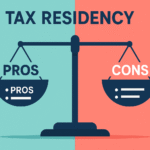Brazil Carnaval, an exuberant festival celebrated annually across the country, is a spectacular showcase of Brazil’s vibrant culture and rich traditions. This electrifying event typically occurs in February or March, leading up to Easter, and attracts millions of visitors from around the globe. Its significance extends beyond mere entertainment; Brazil Carnaval is a powerful expression of Brazilian identity, where music, dance, and artistry collide in a kaleidoscope of color and joy. From the pulsating rhythms of samba to the dazzling costumes and parades that flood the streets, Brazil Carnaval offers an unparalleled experience that captivates the hearts of both locals and international tourists alike.
What truly sets Carnaval apart from other festivals around the world is its immersive atmosphere and community spirit. Unlike typical celebrations that may last only a day or two, Carnaval transforms entire cities into a festive wonderland for weeks. Rio de Janeiro, in particular, is famous for its grand parades and iconic Sambadrome, where the best samba schools compete in a dazzling display of skill and creativity. But every city across the country get into the festivity spirit, and places like Salvador, Recife, Florianópolis, and São Paulo have your own schedule of events, with street parades, parties, and special attraction for the season.
Attending Carnaval can be a thrilling yet affordable experience: budget travelers can have a week-long stay with as little as $300 USD (for accommadation, food and transport) + airplane tickets. Whether you’re dancing in the streets, enjoying live music performances, or reveling in the infectious excitement, Carnaval is a once-in-a-lifetime event that leaves lasting memories and a deeper appreciation for Brazil’s cultural heritage.
Historical and Cultural Background of Brazil Carnaval

Brazil Carnaval, one of most iconic festivals of the country, has its roots deeply embedded in the country’s colonial history, tracing back to the 18th century. Originally influenced by European traditions, particularly the Catholic practice of celebrating before Easter, Carnaval evolved into a uniquely Brazilian celebration that incorporates African, Indigenous, and Portuguese elements. The festival began as a time for revelry and feasting, allowing people to indulge in music, dance, and elaborate costumes before the solemnity of Easter. Over the years, it has transformed into a grand spectacle, with cities like Rio de Janeiro, Salvador, and Recife hosting some of the most extravagant celebrations in the world.
The cultural significance of Carnaval in Brazil cannot be overstated. Brazil Carnaval serves as a powerful expression of national identity, uniting people from diverse backgrounds in a shared celebration of life and creativity. Traditions such as samba parades, street parties, and blocos (informal street bands) are integral to the festivities, showcasing the rich musical heritage of the country. This vibrant festival not only highlights Brazil’s artistic talents but also fosters a sense of community and belonging, making it a must-see for anyone visiting the country.
What You Can Expect From Carnaval

Carnaval is a feast for the senses, offering a plethora of attractions that define this vibrant festival. Some of the main events and performances that visitors can look forward to include:
- Samba Parades: The heart of Carnaval, where samba schools compete in elaborate parades featuring stunning floats and intricate costumes. The Sambadrome in Rio de Janeiro is the most famous venue for these spectacular displays.
- Street Parties (Blocos): Informal gatherings that take over the streets, where locals and tourists alike dance to live music, often featuring samba, axé, and other Brazilian rhythms. Each bloco has its own theme and vibe, making it a unique experience.
- Trio Eletrico: imagine a mobile stage with huge sound system, where the muscians can make their performance while strolling through the city, followed by a massive crowd dacing, singing and playing along. That is what you will found in many cities all over the country, and they are the main attraction on traditional Carnival like Salvador
- Cultural Shows: Various performances showcasing Brazilian music, dance, and folklore take place throughout the festival, providing insight into the country’s rich cultural heritage.
Atmosphere
The atmosphere during Brazil Carnaval is electric and contagious. Streets are filled with laughter, music, and the rhythmic beats of samba, axé, forró, and many other musical rhythms, creating a sense of unity and joy among participants. The vibrant colors of costumes and decorations, combined with the sounds of live bands and DJs, create an immersive experience that is both exhilarating and liberating. Whether you are dancing in the streets or watching the parades, the energy is palpable, making it impossible not to get swept up in the festivities.
Audience
Brazil Carnaval attracts a diverse crowd, from locals to international tourists, all eager to partake in the celebration. The typical audience includes:
- Families: Every city has many family friend attractions and children can enjoy the festivities in a safe and welcoming environment.
- Young Adults: A significant number of young people flock to the street parties, drawn by the music, vibrant and flirting atmosphere.
- Celebrities and Influencers: Notable attendees often include Brazilian celebrities, international artists, and social media influencers, adding to the allure of the event.
When is brazil carnaval and where to enjoy it

Carnaval in Brazil is a nationwide celebration that typically occurs in February or early March, culminating in a vibrant display of music, dance, and culture. In 2025, Brazil Carnaval will take place from March 1st to March 5th, with festivities peaking during this period across various cities. Each city offers its own unique flavor and traditions, making it a diverse experience for visitors.
- The Carnaval of Rio de Janeiro is perhaps the most famous location for Carnaval, known for its grand parades at the Sambadrome Marquês de Sapucaí. This venue can accommodate up to 90,000 spectators and features stunning floats and costumes from competing samba schools. Tickets for the parades range from $50 to $300 USD, depending on seating. Nearby attractions include the iconic Christ the Redeemer statue and Sugarloaf Mountain, both offering breathtaking views of the city.
- The Carnaval of Salvador is renowned for its street parties and the energetic sound of axé music. The historic Pelourinho district comes alive with colorful blocos and performances. Unlike Rio, Salvador’s Carnaval is more focused on street celebrations, and many events are free to attend. Visitors can also explore the beautiful beaches and colonial architecture in the area.
- The Carnaval of São Paulo hosts one of the largest Carnaval celebrations in the country, featuring a mix of samba parades and street parties. The Anhembi Sambadrome is the main venue for the parades, with tickets priced similarly to those in Rio. The city is also known for its vibrant nightlife and cultural attractions, including museums and art galleries.
- In Recife and Olinda, Carnaval is characterized by its rich cultural heritage, with traditional frevo and maracatu music. Olinda’s historic streets are filled with colorful puppets and lively blocos, while Recife offers a more urban Carnaval experience. Both cities provide a unique atmosphere, and many events are free, allowing visitors to immerse themselves in local traditions.
- Florianópolis is famous for its beach parties during Carnaval, attracting a younger crowd looking to enjoy the sun and surf. The island’s vibrant nightlife and beautiful beaches make it a popular destination for those seeking a more laid-back Carnaval experience.
- Ouro Preto, a UNESCO World Heritage site, offers a different take on Carnaval with its historic charm and artistic flair. The city hosts a more traditional celebration, featuring local music and cultural events. Visitors can enjoy the stunning colonial architecture and nearby natural attractions, such as waterfalls and hiking trails.
Travel Tips

Getting There
Traveling to Brazil for Carnaval is an exciting adventure, with various transportation options available:
- Air Travel: Major cities like Rio de Janeiro, Salvador, São Paulo, Recife, and Florianópolis have international airports with flights from around the world. It’s advisable to book flights well in advance, especially during the Carnaval season, as prices can rise significantly.
- Public Transportation: Once in the city, public transportation options such as buses and metro systems are convenient. In Rio de Janeiro, the metro is an efficient way to reach the Sambadrome, while in São Paulo, the metro system can help you navigate to various Carnaval events.
- Ridesharing: Services like Uber and local taxis are widely available in all major cities, providing a safe and efficient way to get around during the festivities.
Accommodation
Choosing the right place to stay is crucial for enjoying Carnaval. Here are some suggestions:
- Hotels: Look for hotels in neighborhoods close to the main events. In Rio de Janeiro, areas like Copacabana and Ipanema are popular, with prices ranging from $100 to $300 USD per night during Carnaval. In Salvador, staying in the Pelourinho district offers easy access to street parties.
- Hostels: For budget travelers, hostels are a great option, with prices starting around $20 to $50 USD per night. Many hostels in cities like Recife and Florianópolis organize group outings to Carnaval events, making it easy to meet fellow travelers.
- Vacation Rentals: Platforms like Airbnb provide a variety of rental options, allowing visitors to stay in local neighborhoods and experience the culture more intimately, especially in cities like Ouro Preto and Olinda.
Safety Tips
Staying safe during Brazil Carnaval is essential:
- Stay Aware: Keep an eye on your belongings, as crowded events can attract pickpockets. Use a crossbody bag or money belt to secure valuables, particularly in busy areas like São Paulo and Rio de Janeiro.
- Travel in Groups: Whenever possible, travel with friends or fellow festival-goers, especially at night. This is particularly important in larger cities where the crowds can be overwhelming.
- Health Precautions: Stay hydrated and use sunscreen, as the festivities often take place outdoors in the sun. This is especially important in warmer locations like Florianópolis and Salvador.
Weather Considerations
During Carnaval, Brazil typically experiences warm and humid weather:
- Typical Conditions: Expect temperatures to range from 75°F to 90°F (24°C to 32°C) during the day, with occasional rain showers, particularly in coastal cities like Recife and Salvador.
- What to Wear: Lightweight, breathable clothing is recommended, along with comfortable shoes for dancing and walking. Don’t forget a poncho or light rain jacket in case of rain, especially in cities known for sudden showers like São Paulo.
Conclusion

Brazil Carnaval is a celebration like no other, offering a unique blend of music, dance, and cultural expression that captivates the hearts of millions. From the grand samba parades in Rio de Janeiro to the lively street parties in Salvador and the traditional festivities in Recife and Olinda, each city presents its own distinct flavor of Carnaval. Visitors can immerse themselves in the vibrant atmosphere, enjoy the colorful costumes, and dance to the infectious rhythms that fill the air. Whether you’re exploring the historic streets of Ouro Preto or soaking up the sun on the beaches of Florianópolis, Carnaval provides an unforgettable experience that showcases the rich diversity and spirit of Brazil.
We encourage you to consider attending Brazil Carnaval and experiencing this extraordinary event firsthand. It’s a chance to connect with people from all walks of life, indulge in delicious local cuisine, and create memories that will last a lifetime. With a range of activities and attractions to suit every interest, Carnaval is a must-see for anyone looking to explore the vibrant culture of Brazil.
Plan your visit to Brazil and explore the vibrant Brazil Carnaval. Whether you’re a seasoned traveler or embarking on your first adventure, Carnaval promises an exhilarating journey filled with joy, excitement, and discovery. Don’t miss the opportunity to be part of this iconic celebration and witness the magic of Brazil’s most famous festival.
FAQ
What is Carnaval?
Carnaval is a vibrant and colorful festival celebrated across Brazil, known for its lively parades, music, dance, and cultural festivities. It typically takes place in February or early March, leading up to Ash Wednesday.
Where are the best places to experience Brazil Carnaval?
Some of the most popular cities to experience Carnaval includes:
- Rio de Janeiro: Famous for its grand samba parades at the Sambadrome.
- Salvador: Known for its energetic street parties and axé music.
- São Paulo: Offers a mix of samba parades and vibrant street celebrations.
- Recife and Olinda: Renowned for traditional frevo music and cultural heritage.
- Florianópolis: Popular for beach parties and a laid-back atmosphere.
- Ouro Preto: Offers a more traditional and historic Carnaval experience.
How much does it cost to attend Brazil Carnaval?
The cost of attending Carnaval can vary widely depending on the city and the type of experience you choose. On average, you can expect to spend as low as $300 USD for a complete experience, including accommodation, food, and event tickets.
When should I book my trip to Brazil Carnaval?
Carnaval in Brazil take place between February and March, depending of the year (in 2025 it will take place between March 1st and March 5th). It’s advisable to book your flights and accommodation several months in advance, as prices tend to rise closer to the event. Many people start planning their trip as early as six months before Carnaval.
What should I wear to Carnaval?
Comfortable and lightweight clothing is recommended, as the weather is typically warm and humid. Bright colors and festive attire are encouraged, especially if you plan to join the street parties. Don’t forget comfortable shoes for long periods of parting and walking.
Is Brazil Carnaval family-friendly?
Yes, Carnaval can be a family-friendly event, especially in cities like Rio de Janeiro and São Paulo, where there are designated areas for families. However, some street parties may be more suitable for adults, so it’s important to research the specific events you plan to attend.
Are there any safety tips for attending Brazil Carnaval?
- Stay Aware: Keep an eye on your belongings and be cautious in crowded areas.
- Travel in Groups: Whenever possible, travel with friends or fellow festival-goers.
- Stay Hydrated: Drink plenty of water and use sunscreen to protect yourself from the sun.
Can I participate in the parades?
Yes, many samba schools offer the opportunity for visitors to join their parades. This usually requires purchasing a costume and attending rehearsals. Prices can vary, so it’s best to contact the samba schools directly for more information.
references
For those planning to experience the vibrant festivities of Brazil Carnaval Brazil, here are some official websites that provide valuable information and resources:
- Rio de Janeiro Carnaval: For details on the famous samba parades, ticket purchases, and event schedules, visit the official Rio Carnaval website: Rio Carnaval Official Site
- Salvador Carnaval: To learn more about the street parties, music, and cultural events in Salvador, check out the official tourism site: Salvador Tourism
- São Paulo Carnaval: For information on the samba parades and other festivities in São Paulo, visit the city’s official tourism page: São Paulo Turismo
- Recife and Olinda Carnaval: Discover the unique traditions and events in Recife and Olinda by visiting the Pernambuco tourism website: Visit Pernambuco
- Florianópolis Carnaval: For insights into the beach parties and celebrations in Florianópolis, explore the official tourism site: Visit Floripa
- Ouro Preto Carnaval: To find out more about the historic and cultural Carnaval in Ouro Preto, visit the city’s tourism page: Ouro Preto Turismo






